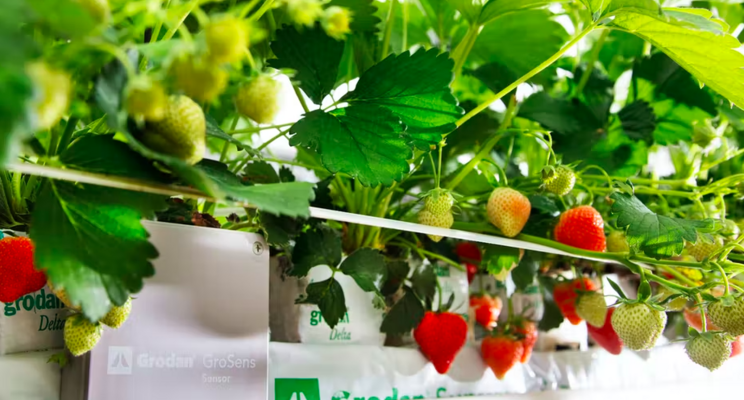Meeting the needs of a changing industry
Added on 04 July 2022


Genson Group are a major plant propagator/grower and a leader in the Dutch strawberry market, with clients including the country's largest supermarket chain. Elke Schellekens is a soft fruit and flower mapping R&D expert. She looks at new varieties and how best to grow them. If a client wants to know anything, from optimal feeding schedules, to whether or not to cut leaves, to the best tray plants to use, Elke will carry out the practical research to find the answer.
Old substrates problematic
Over the last 30 years or so, strawberry growers have made huge improvements to production, initially using peat and then coco substrates. But the use of such substrates is becoming increasingly challenging. First, because legislation is tightening to address their environmental impact, for example through peat excavation. But also because responsible growers themselves want to find more sustainable solutions. So Genson has set up trials to find out which other substrates, including stone wool but also for example wood-fibre substates, may offer the solution for the future.
"The stone wool trials are now in their third year," explains Elke, "We've had good results. There are obviously still things we need to fine-tune, but the results so far from the substrates being trialed suggest stone wool has great potential."
Why is that? "When running a trial, we continuously tweak parameters, such as the feeding schedule and water levels, to pinpoint how to optimise a plant's fruit production. With stone wool you can do that very quickly and precisely. It's also an environmentally-friendly solution."
"Stone wool has some key characteristics that help improve production." adds Maarten Coelen, Business Support Export Market at Grodan, who also has over a decade's experience as a strawberry farm owner. "Primarily, its steerability, its hygiene and the fact that stone wool doesn't buffer any elements, so what you give a plant is directly available to it. And in terms of sustainability, stone wool has relatively low water usage, and recycling that water is relatively easy. Plus there are various end-of-life solutions for stone wool and in the Netherlands 100% of used stone wool is already recycled."
Source: Grodan
More news















